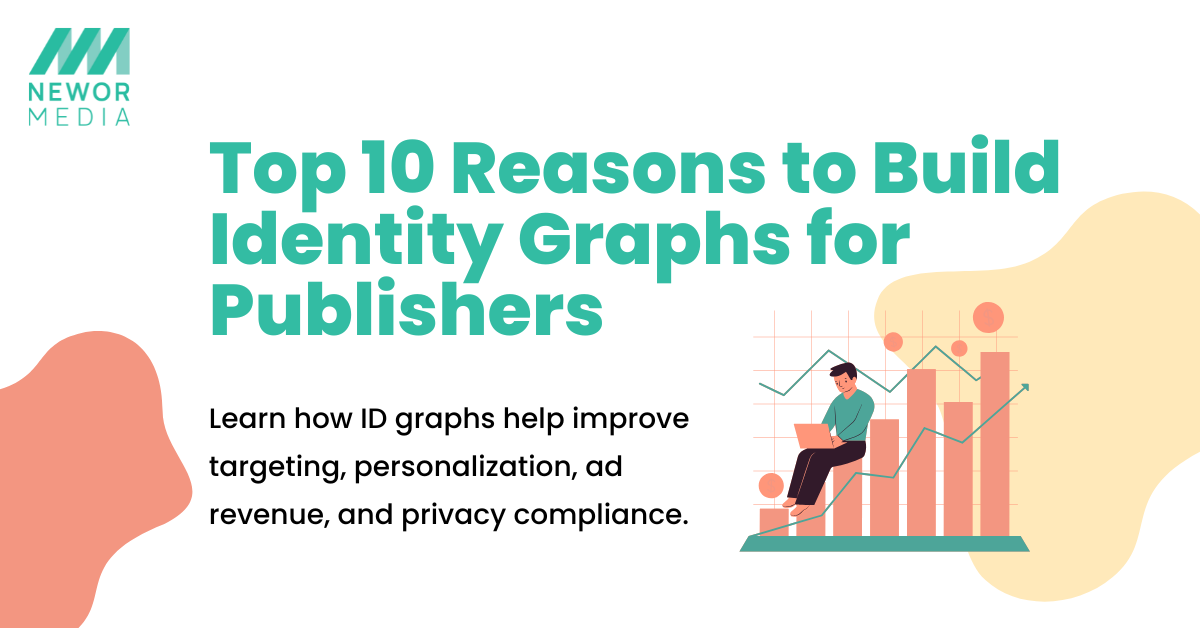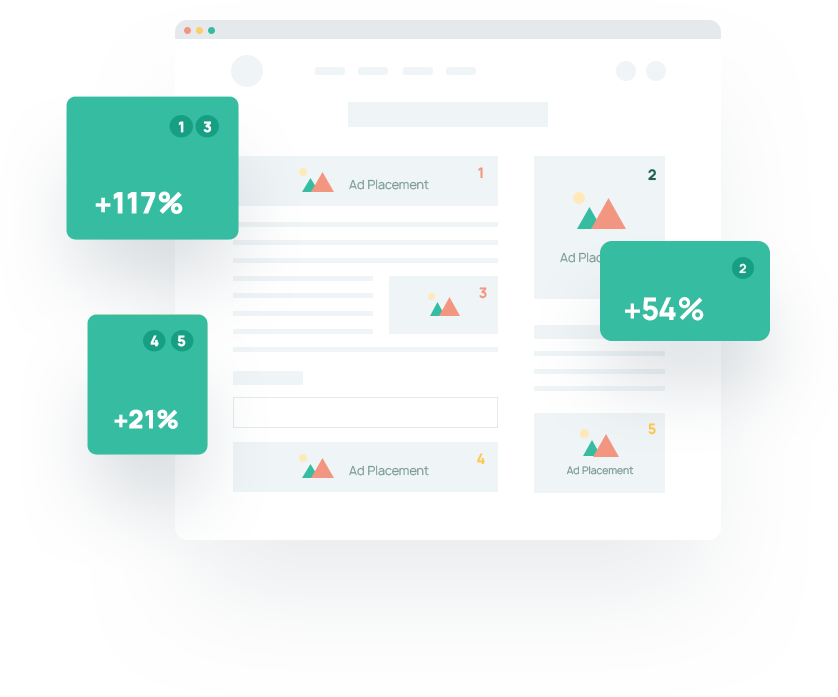In the ever-evolving digital ad ecosystem, publishers are constantly looking for smarter ways to understand their audience and serve them better. One powerful but often underused tool in this space? Identity graphs.
If you’ve heard the term tossed around in conversations about cookieless targeting, personalization, or ad revenue optimization—but you’re not exactly sure what it means or why it matters—you’re not alone.
In this blog, we’ll walk through what an identity graph is, how it works, and more importantly, why publishers should consider building one.
What is an Identity Graph?
At a basic level, an identity graph (ID graph) is a database that connects multiple identifiers across devices, platforms, and touchpoints to a single user profile. Think of it as a behind-the-scenes tech stack that helps you recognize who’s visiting your site—even if they’re using a different device or aren’t logged in.
An identity graph example:
Say a user visits your website on their laptop, then again on their phone. If both sessions are associated with the same hashed email address or authenticated login, an identity graph can link these activities into one unified profile. That profile can then help you serve consistent, personalized experiences—whether they’re reading news on desktop or watching a video on mobile.
Why Should Publishers Care About Identity Graphs?
With third-party cookies on the decline and privacy expectations on the rise, publishers can’t rely on traditional tracking methods. That’s where identity graphing comes in. Here are ten compelling reasons to build or invest in an identity graph today:
Future-Proof Audience Targeting
With Google phasing out third-party cookies, publishers need a resilient solution to keep audience insights flowing. ID graphs give you a first-party data advantage, allowing you to understand users across platforms without relying on cookies.
Unify Cross-Device Experiences
Your users don’t live on just one device. Whether they’re on desktop, mobile, tablet, or smart TV, identity graphs help you connect the dots so your content—and your ads—follow them seamlessly.
Better Ad Personalization
The more you know about your readers (ethically and compliantly), the better your ad experience will be. With a strong identity graph database, you can deliver personalized ad experiences that boost engagement and revenue—without being creepy or invasive.
Increase CPMs with Authenticated Traffic
Advertisers are willing to pay more for high-quality, authenticated impressions. Identity graphs help you build stronger first-party audiences, increasing the value of your inventory and raising CPMs.
Build Stronger First-Party Data Strategies
An identity graph is essentially the backbone of a first-party data ecosystem. It connects emails, logins, content preferences, and more—making your audience segments smarter and more actionable.
Optimize Content Recommendations
Knowing that a user who reads tech reviews on desktop also loves sports on mobile? That insight can power tailored content recommendations, keeping readers engaged and increasing session duration.
Improve Attribution Accuracy
Attribution is tough—especially when users interact across multiple platforms. Identity graphing helps you tie actions together across sessions and devices, offering a clearer picture of what content (or campaign) drove results.
Enhance Subscriber Journeys
For subscription-based publishers, an identity graph can unlock smarter onboarding, upselling, and retention strategies. You’ll know when a casual reader becomes a newsletter subscriber—and when they’re primed for a paid offer.
Stay Compliant With Privacy Regulations
A good identity graph is built with privacy and transparency in mind. When you know exactly what data you’re collecting, how it’s stored, and where it’s used, it’s easier to stay in line with regulations like GDPR, CCPA, and others.
Own Your Audience Relationship
Perhaps the most important reason: control. When you invest in an identity graph, you’re not dependent on walled gardens or external platforms to understand your audience. You own the relationship—and the insights that come with it.
How Publishers Can Start Identity Graphing
Building your own identity graph might sound complex, but you don’t have to go it alone. Many ID graph solutions are now tailored for publishers and offer integrations with existing tech stacks like CRMs, CDPs, and ad servers.
Here’s a simple roadmap to start:
- Audit your first-party data: What identifiers do you already collect (email, logins, subscriptions)?
- Centralize data sources: Bring everything into a clean, structured environment.
- Choose an identity graph solution: Work with a trusted partner that supports privacy compliance and real-time identity resolution.
- Test and optimize: Run A/B tests to track improvements in ad performance, engagement, or subscriber conversion.
Final Thoughts
In today’s shifting adtech landscape, identity graphs aren’t just a “nice to have”—they’re quickly becoming essential. Whether you’re trying to boost monetization, serve better content, or future-proof your business, an identity graph can give you the clarity and control you need to grow.
At Newor Media, we believe publishers should always have the tools—and the ownership—to understand and monetize their audiences more effectively. Identity graphing is one of the most strategic moves you can make in that direction.
Ready to explore more?
Let’s talk about how Newor Media can help you make identity-based monetization simple and scalable.

